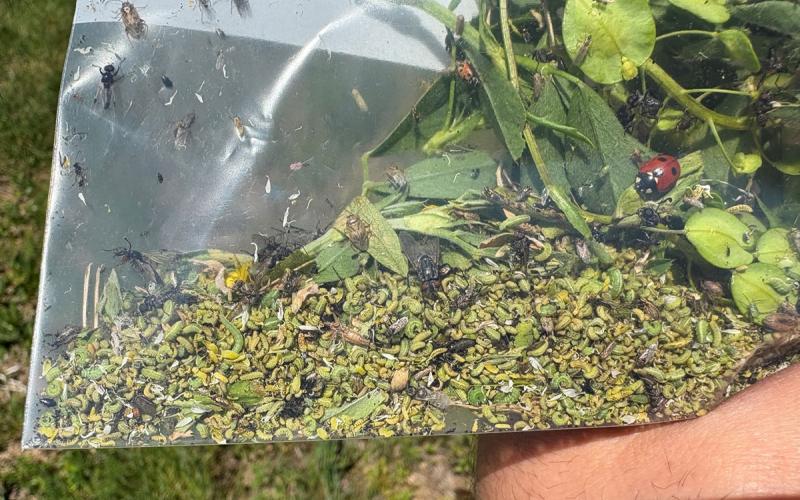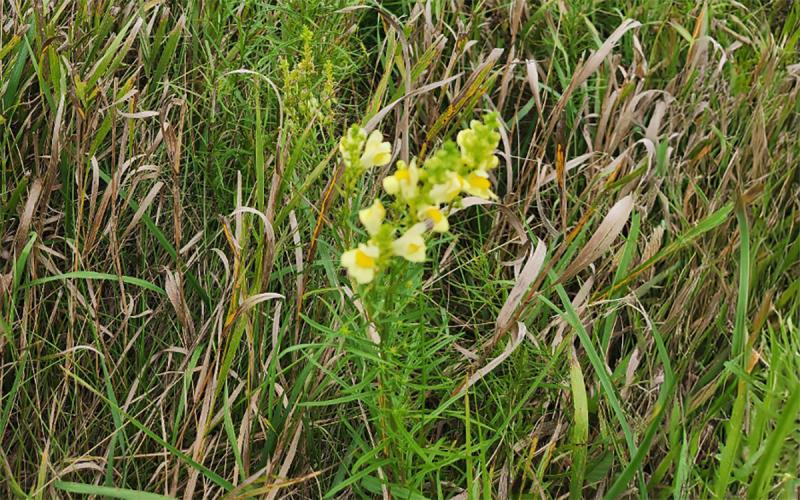Originally Submitted: May 13, 2021
Although last week was warmer, we still didn’t accumulate a lot of degree days for alfalfa weevils. The upcoming forecast looks more favorable for alfalfa growth and, subsequently, alfalfa weevil development. Alfalfa fields should be monitored in the next few days for alfalfa weevil activity, as there have been several reports of adult activity.
Calculating Degree Days for Alfalfa Weevils
To monitor for alfalfa weevils, we can estimate activity based on degree day accumulation. The equation for degree days is:
(Maximum daily temperature + Minimum daily temperature) ÷ 2 - The Developmental Threshold
For the alfalfa weevil, the developmental threshold is 48 degrees Fahrenheit. This equation is used for days during which the maximum temperature exceeds 48 degrees Fahrenheit. In cases where the minimum temperature is lower than 48 degrees Fahrenheit, the actual temperature is substituted by the 48 degrees Fahrenheit developmental threshold since no development is occurring below it. Degree day accumulation begins on Jan. 1. First overwintering adult alfalfa weevil activity is generally observed around 200-degree days and larvae hatch is generally around 300-degree days (Table 1).
The alfalfa weevil has four larval instars, with the first being the smallest larvae and the fourth being the largest larvae. The later instar larvae will consume additional leaf tissue, which results in increased defoliation. As a result, management would ideally be done while larvae are still in the first and second instar growth stages.
Current Estimate on Alfalfa Weevil Activity in South Dakota
Based on current degree day accumulations, overwintering alfalfa weevil adult activity is likely throughout all of South Dakota. During the next week, there will be larval activity likely throughout the state, except for the Brookings area, where there still has not been enough degree day accumulation. Alfalfa fields in areas near Hot Springs, Mission, Winner, Mitchell and Vermillion should be scouted to determine if larval feeding is occurring. In these areas, third and fourth instar larvae could be present within the field. These instars are associated with increased feeding and defoliation that can occur rapidly if a large population is present.
|
Degree Days |
Alfalfa Weevil Activity (Overwintering as Adults) |
|---|---|
|
|
Limited to no activity of alfalfa weevils. |
|
|
Overwintering adult activity is observed in alfalfa fields (begin scouting fields). |
|
|
Spring laid eggs hatch. First instar larvae begin feeding. |
|
|
Second instar larvae feeding. |
|
|
Third instar larvae feeding. |
|
|
Fourth instar larvae feeding. (Period when greatest damage will occur) |
|
|
Pupation. |
|
|
Adult emergence (will overwinter). |
| Location |
Since January 1, 2021 |
(Overwintering as Adults) |
|---|---|---|
| Buffalo |
|
Second instar larvae feeding. |
| Newell |
|
Spring laid eggs hatch. First instar larvae begin feeding. |
| Rapid City |
|
Second instar larvae feeding. |
| Hot Springs |
|
Third instar larvae feeding. |
| Lemmon |
|
Second instar larvae feeding. |
| Faith |
|
Second instar larvae feeding. |
| Cottonwood |
|
Second instar larvae feeding. |
| Mission |
|
Third instar larvae feeding. |
| Selby |
|
Spring laid eggs hatch. First instar larvae begin feeding. |
| Gettysburg |
|
Spring laid eggs hatch. First instar larvae begin feeding. |
| Pierre |
|
Second instar larvae feeding. |
| Winner |
|
Fourth instar larvae feeding. (Period when greatest damage will occur) |
| Aberdeen |
|
Second instar larvae feeding. |
| Huron |
|
Second instar larvae feeding. |
| Mitchell |
|
Third instar larvae feeding. |
| Tyndall |
|
Second instar larvae feeding. |
| Sisseton |
|
Spring laid eggs hatch. First instar larvae begin feeding. |
| Brookings |
|
Overwintering adult activity is observed in alfalfa fields (begin scouting fields). |
| Vermillion |
|
Fourth instar larvae feeding. (Period when greatest damage will occur) |


